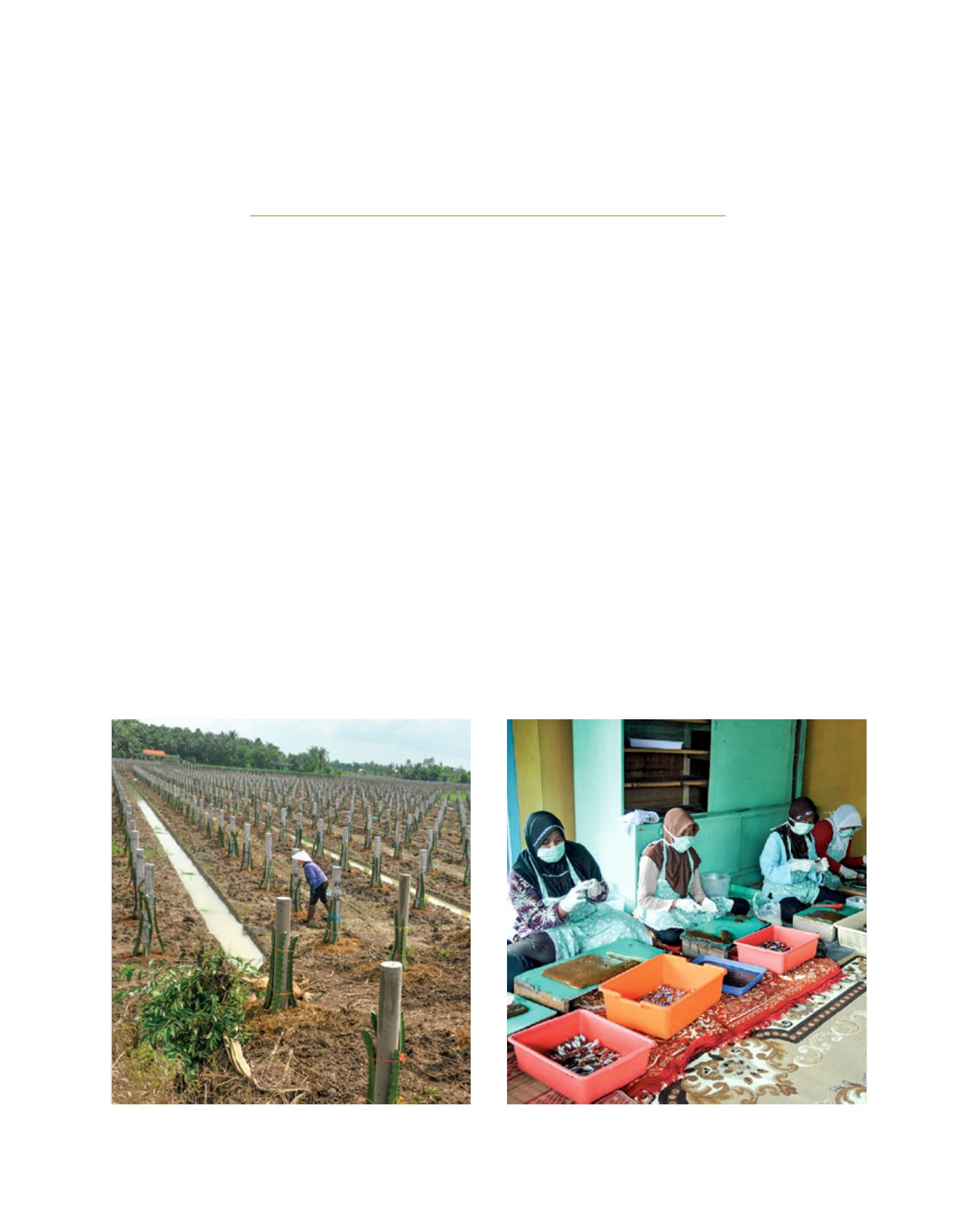

[
] 162
Tropical fruits as a source of nutrition
and income for farm families
Yacob Ahmad, International Tropical Fruits Network
T
ropical fruits are defined as fruits that are grown
in the hot and humid regions within the Tropic
of Cancer and Tropic of Capricorn, which covers
most of the tropical and subtropical areas of Asia,
Africa, Latin America and Oceania. Tropical fruits have
always been part of the rural landscape of these regions,
with the sole purpose of providing food and nutrition
for human well-being. Fruits such as bananas, bread-
fruit and jackfruit have been used as staples in Asian,
African and Asia-Pacific countries, to complement other
grain or root crops.
Due to increasing demand over the years, some of the
popular fruit types gradually developed from a subsist-
ence level to one that can generate income. This includes
the major globally traded tropical fruits such as bananas,
mangoes, pineapples, avocadoes and papayas. Others are
minor fruits which are grown commercially now such as
guava, rambutan, durian, jackfruit, pitaya and passion
fruit. Besides providing nutrition to farm families, cultivat-
ing tropical fruits now is an important income-generating
activity for these families, which in turn improves the local
economy. Tropical fruits are reasonably inexpensive, which
makes them another export option for producers to diversify
exports. It has been estimated that there will be an uptrend
in the demand for tropical fruits in domestic and export
markets, especially from consuming countries such as the
USA, European Union (EU) and Japan.
Banana is the major tropical fruit with an estimated world
production in 2011 of 183 million tonnes. Of this total
amount, 17 per cent was traded by mostly multinationals.
Smallholders including farm families therefore produce about
80 per cent of global production. Excluding bananas, world
production of tropical fruits increased from 64 million tonnes
in 2002 to 95 million tonnes in 2011. Mango was the main
fruit produced, accounting for almost 40 per cent of total
production, followed by pineapple at 25 per cent, papaya at 10
per cent and avocado at 4 per cent. Other minor tropical fruits
such as durian, rambutan, litchi, guava, and mangosteen made
up about 20 per cent of total tropical fruit production. Asia
A range of farmers cultivate tropical fruit, from subsistence farmers to more
commercial, plantation-style operators and cooperatives
Fruit processing helps to minimize wastage and is usually organized by the
women in the farm community
Image: International Tropical Fruits Network
Image: International Tropical Fruits Network
D
eep
R
oots
















